Vampires and Vampirism is part of the canon of works on the folklore of vampires. Inside these pages are many accounts of the presence of nocturnal creatures with an unnatural hunger. Readers will discover that tales of vampires are whispered not only in the sleepy villages of easternand central Europe but also in the Middle East, the Asian sub-continent, and the isles of Great Britain.
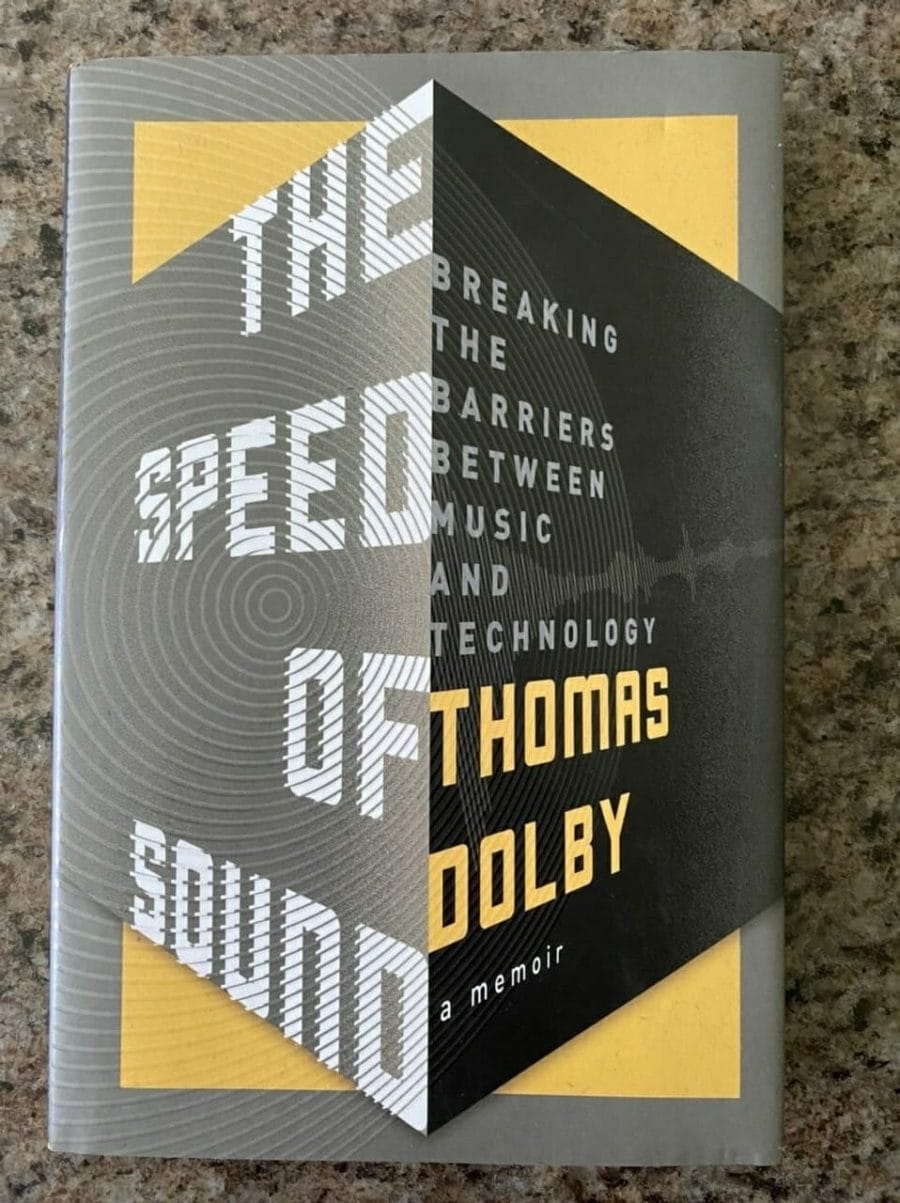
The remarkable story of rising to the top of the music charts, a second act as a tech pioneer, and the sustaining power of creativity and art.
Thomas Dolby’s hit songs “She Blinded Me with Science” and “Hyperactive!” catapulted him to international fame in the early 80’s. A pioneer of New Wave and Electronica, Thomas combined a love for invention with a passion for music, and the result was a new sound that defined an era of revolutionary music. But as record company politics overshadow the joy of performing, Thomas finds a surprising second act.
Starting out in a rat-infested London bedsit, a teenage Thomas Dolby stacks boxes by day at the grocery and tinkers with a homemade synthesizer at night while catching the Police at a local dive bar, swinging by the pub to see the unknown Elvis Costello and starting the weekend with a Clash show at a small night club. London on the eve of the 1980s is a hotbed for music and culture, and a new sound is beginning to take shape, merging technology with the musical energy of punk rock. Thomas plays keyboards in other bands’ shows, and with a bit of luck finds his own style, quickly establishing himself on the scene and recording break out hits that take radio, MTV and dance clubs by storm. The world is now his oyster, and sold out arenas, world tours, even a friendship with Michael Jackson become the fabric of his life.
But as the record industry flounders and disillusionment sets in, Thomas turns his attention to Hollywood. Scoring films and computer games eventually leads him to Silicon Valley and a software startup that turns up the volume on the digital music revolution. His company barely survives the dotcom bubble but finally even the mavericks at Apple, Microsoft, Netscape and Nokia see the light. By 2005, two-thirds of the world’s mobile phones embed his Beatnik software. Life at the zenith of a tech empire proves to be just as full of big personalities, battling egos and roller-coaster success as his days spent at the top of the charts.
THE SPEED OF SOUND is the story of an extraordinary man living an extraordinary life, a single-handed quest to make peace between art and the digital world.
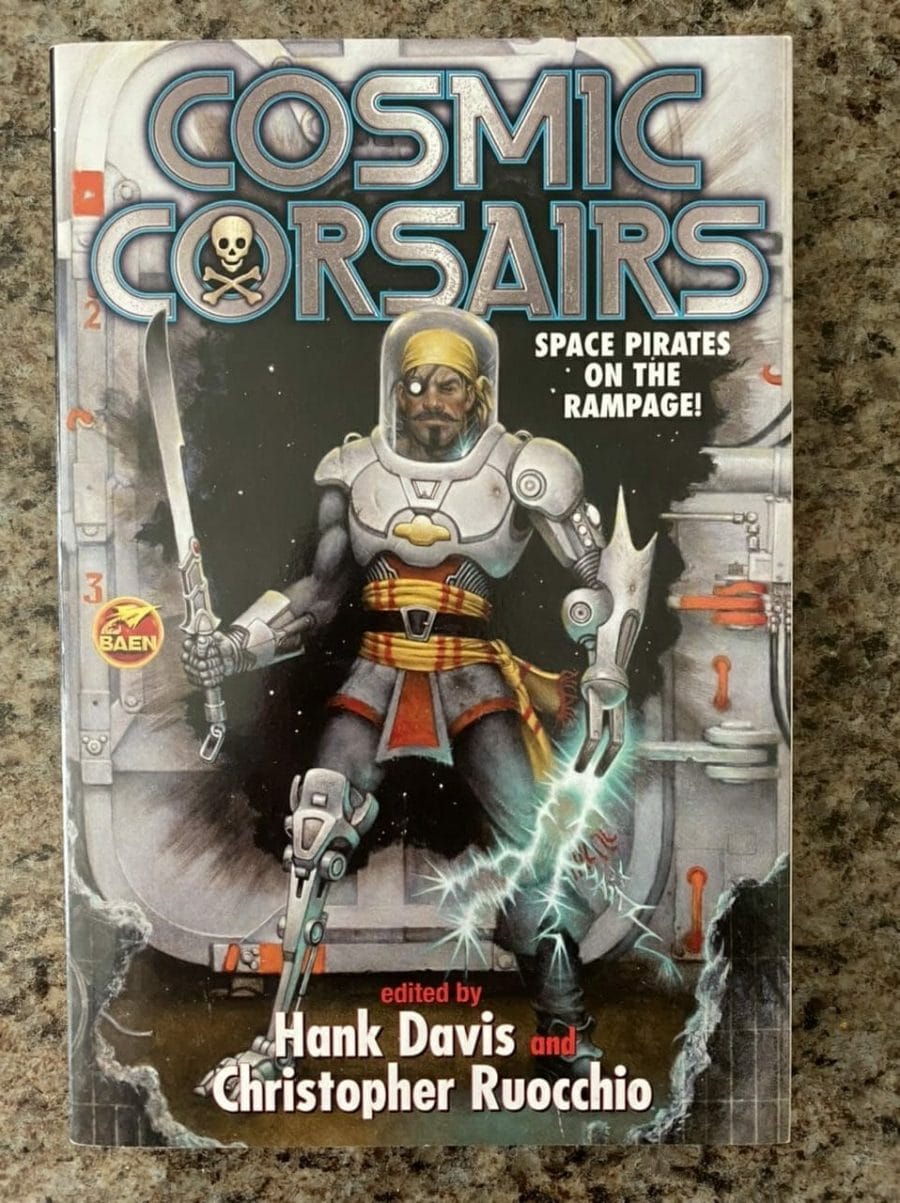
SPACE PIRATES!
Words that conjure up rousing tales of adventure, derring-do, brave heroes battling the scurvy vermin of the galaxy. Those vermin have taken to pillaging cargo ships and, even worse, space liners, relieving the helpless passengers of their valuables, and worse with the comely women passengers, then spacing the lot—unless one or more of the aforementioned brave heroes arrive in the nick of time, and turn the tables, making the spaceways safe again for the innocent and helpless. On the other hand, perhaps the pirate captain is a woman, and it’s the comely male passengers who need rescuing. And on the third hand (we’re talking space pirates here, possibly aliens with four or more arms), perhaps those ships traversing the interstellar void are not so innocent, and the pirates, fighting an evil despotic star empire and defending the freedom of the space lanes, are the good guys and gals. The possibilities are many, and the daring exploits set the blood racing in the veins of any reader with even a trace of buccaneering spirit in their hidden self.
So board a battered but spaceworthy fighting starship with such star-spanning and award-winning crewmates as Robert Silverberg, Elizabeth Bear and Sarah Monette, Larry Niven, Fritz Leiber, and Sarah A. Hoyt, plus James H. Schmitz, Leigh Brackett, Stanley G. Weinbaum, and more, and set sail—er, thrusters—for a universe of freebooting adventure!
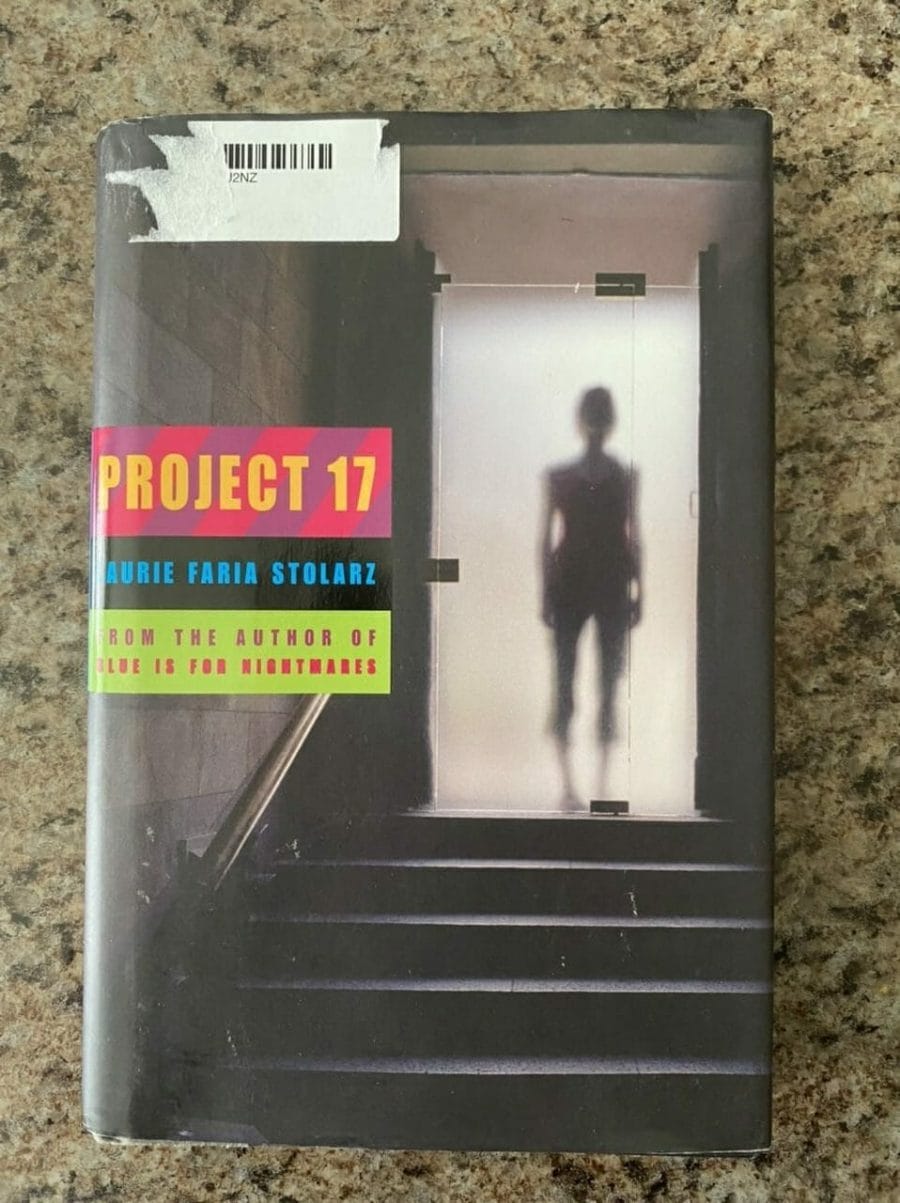
High atop Hathorne Hill, near Boston, sits Danvers State Hospital. Built in 1878 and closed in 1992, this abandoned mental institution is rumored to be the birthplace of the lobotomy. Locals have long believed the place to be haunted. They tell stories about the unmarked graves in the back, of the cold spots felt throughout the underground tunnels, and of the treasures found inside: patients’ personal items like journals, hair combs, and bars of soap, or even their old medical records, left behind by the state for trespassers to view.
On the eve of the hospital’s demolition, six teens break in to spend the night and film a movie about their adventures. For Derik, it’s an opportunity to win a filmmaking contest and save himself from a future of flipping burgers at his parents’ diner. For the others, it’s a chance to be on TV, or a night with no parents. But what starts as a playful dare quickly escalates into a frenzy of nightmarish action. Behind the crumbling walls, down every dark passageway, and in each deserted room, they will unravel the mysteries of those who once lived there and the spirits who still might.
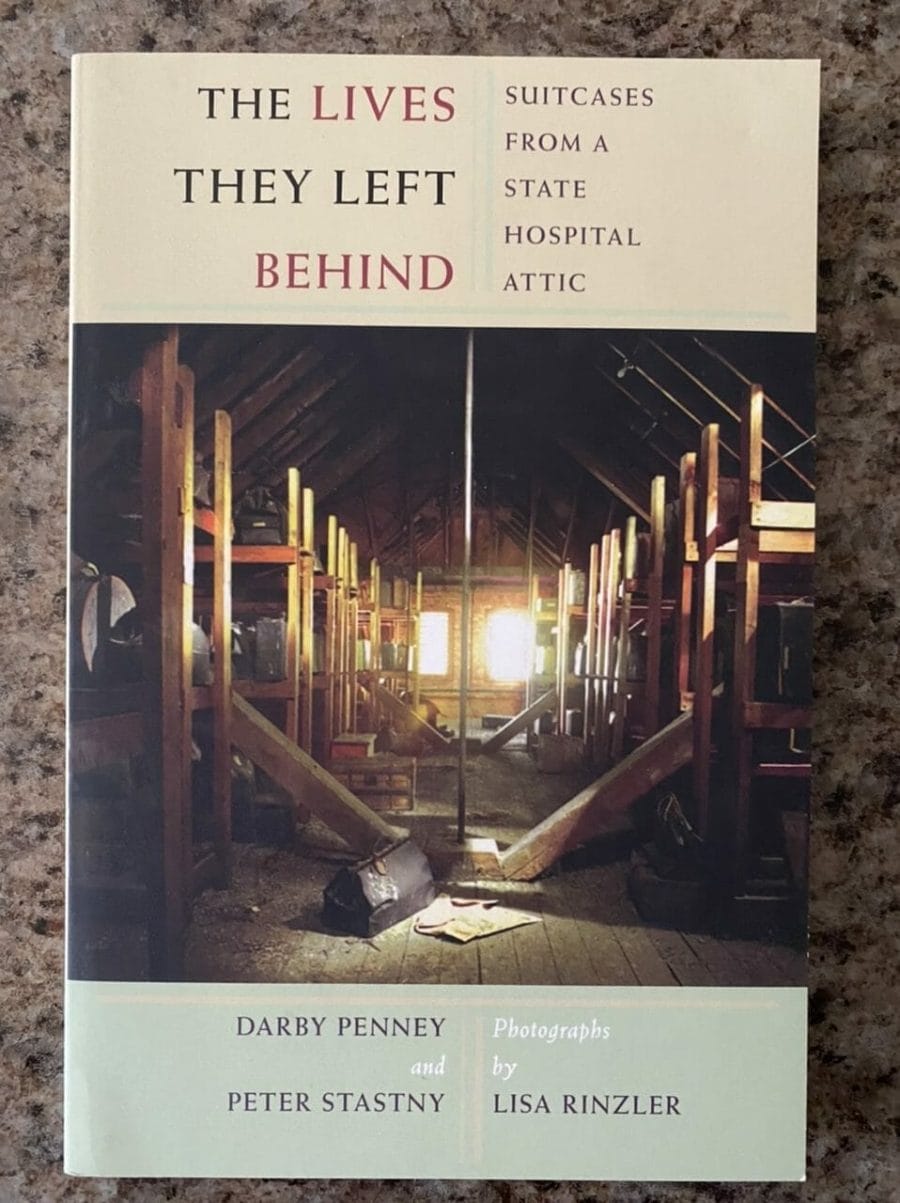
When Willard State Hospital closed its doors in 1995, after operating as one of New York State’s largest mental institutions for over 120 years, a forgotten attic filled with suitcases belonging to former patients was discovered. Using the possessions found in these suitcases along with institutional records and doctors’ notes from patient sessions, Darby Penney, a leading advocate of patients’ rights, and Peter Stastny, a psychiatrist and documentary filmmaker, were able to reconstruct the lives of ten patients who resided at Willard during the first half of the twentieth century.
The Lives They Left Behind tells their story. In addition to these human portraits, the book contains over 100 photographs as well as valuable historical background on how this state-funded institution operated. As it restores the humanity of the individuals it so poignantly evokes, The Lives They Left Behind reveals the vast historical inadequacies of a psychiatric system that has yet to heal itself.

By the early nineties, singer-songwriter and former Blake Babies member Juliana Hatfield’s solo career was taking off: She was on the cover of Spin and Sassy. Ben Stiller directed the video for her song “Spin the Bottle” from the Reality Bites film soundtrack. Then, after canceling a European tour to treat severe depression and failing to produce another “hit,” she spent a decade releasing well reviewed albums on indie labels and performing in ever-smaller clubs. A few years ago, she found herself reading the New Yorker on a filthy couch in the tiny dressing room of a punk club and asked, “Why am I still doing this?” By turns wryly funny and woundingly sincere, When I Grow Up takes you behind the scenes of rock life as Hatfield recounts her best and worst days, the origins of her songs, the source of her woes, and her quest to find a new purpose in life.

From our bank accounts to supermarket checkouts to the movies we watch, strings of ones and zeroes suffuse our world. Digital technology has defined modern society in numerous ways, and the vibrant digital culture that has now resulted is the subject of Charlie Gere’s engaging volume.
In this revised and expanded second edition, taking account of new developments such as Facebook and the iPhone, Charlie Gere charts in detail the history of digital culture, as marked by responses to digital technology in art, music, design, film, literature and other areas. After tracing the historical development of digital culture, Gere argues that it is actually neither radically new nor technologically driven: digital culture has its roots in the eighteenth century and the digital mediascape we swim in today was originally inspired by informational needs arising from industrial capitalism, contemporary warfare and counter-cultural experimentation, among other social changes.
A timely and cutting-edge investigation of our contemporary social infrastructures, Digital Culture is essential reading for all those concerned about the ever-changing future of our Digital Age.

In this insightful social commentary, David Weinberger goes beyond misdirected hype to reveal what is truly revolutionary about the Web. Just as Marshall McLuhan forever altered our view of broadcast media, Weinberger shows that the Web is transforming not only social institutions but also bedrock concepts of our world such as space, time, self, knowledge-even reality itself. Through stories of life on the Web, a unique take on Web sites, and a pervasive sense of humor, Weinberger is the first to put the Web into the social and intellectual context we need to begin assessing its true impact on our lives. The irony, according to Weinberger, is that this seemingly weird new technology is more in tune with our authentic selves than is the modern world. Funny, provocative, and ultimately hopeful, Small Pieces Loosely Joined makes us look at the Web as never before.

The provocative transgender advocate and lead singer of the punk rock band Against Me! provides a searing account of her search for identity and her true self. It began in a bedroom in Naples, Florida, when a misbehaving punk teenager named Tom Gabel, armed with nothing but an acoustic guitar and a headful of anarchist politics, landed on a riff. Gabel formed Against Me! and rocketed the band from its scrappy beginnings-banging on a drum kit made of pickle buckets-to a major-label powerhouse that critics have called this generation’s The Clash. Since its inception in 1997, Against Me! has been one of punk’s most influential modern bands, but also one of its most divisive. With every notch the four-piece climbed in their career, they gained new fans while infuriating their old ones. They suffered legal woes, a revolving door of drummers, and a horde of angry, militant punks who called them “sellouts” and tried to sabotage their shows at every turn. But underneath the public turmoil, something much greater occupied Gabel-a secret kept for 30 years, only acknowledged in the scrawled-out pages of personal journals and hidden in lyrics. Through a troubled childhood, delinquency, and struggles with drugs, Gabel was on a punishing search for identity. Not until May of 2012 did a Rolling Stone profile finally reveal it: Gabel is a transsexual, and would from then on be living as a woman under the name Laura Jane Grace. Tranny is the intimate story of Against Me!’s enigmatic founder, weaving the narrative of the band’s history, as well as Grace’s, with dozens of never-before-seen entries from the piles of journals Grace kept. More than a typical music memoir about sex, drugs, and rock ‘n’ roll-although it certainly has plenty of that-Tranny is an inside look at one of the most remarkable stories in the history of rock.
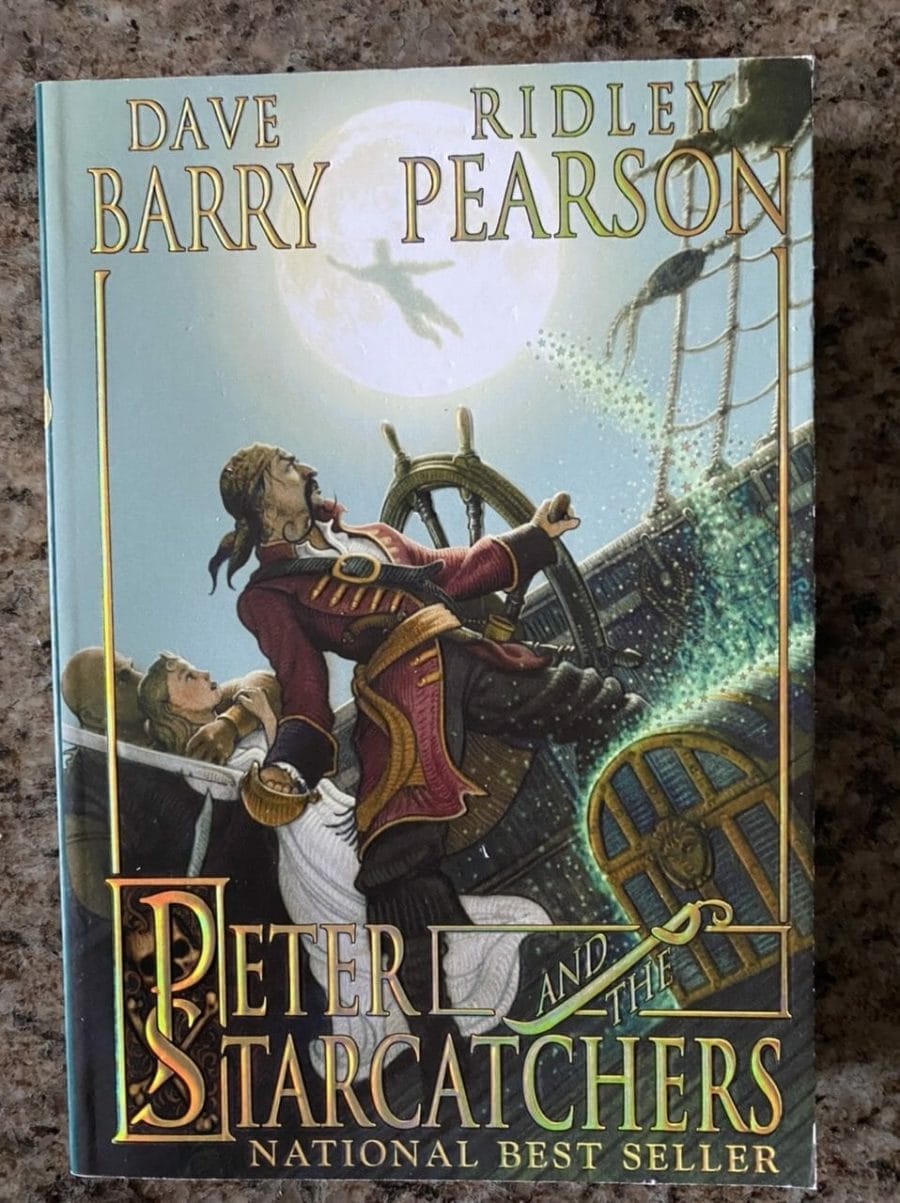
In an evocative and fast-paced adventure on the high seas and on a faraway island, an orphan boy named Peter and his mysterious new friend, Molly, overcome bands of pirates and thieves in their quest to keep a fantastical secret safe and save the world from evil. Best-selling authors Dave Barry and Ridley Pearson have turned back the clock to reveal the wonderful story that precedes J. M. Barrie’s beloved Peter Pan. Peter and the Starcatchers is brimming with richly developed characters, from the scary but somehow familiar Black Stache and ferocious Mister Grin to the sweet but sophisticated Molly and fearless Peter. Page after page of riveting adventures take readers of all ages on a voyage from a filthy, crime-ridden port in old England across the turbulent sea. Aboard the Neverland is a trunk that hold the “greatest treasure on earth” —but is it gold, jewels, or something far more mysterious and dangerous?
Roiling waves and raging storms; skullduggery and pirate treachery provide the backdrop for battles at sea. Bone-crushing breakers eventually land our characters on Mollusk Island—where the action really heats up.
This impossible-to-put-down tale leads readers on an unforgettable journey—fraught with danger yet filled with mystical and magical moments.

Artemesia is the daughter of a pirate queen, and she’s sick of practicing deportment at the Angels Academy for Young Maidens. Escaping from the school, she hunts up her mother’s crew and breezily commands them out to sea in a leaky boat. Unfortunately, Art’s memories of her early life may not be accurate-her seasick crew are actors, and Art’s infamous mother was the darling of the stage in a pirate drama. But fiery, pistol-proof Art soon shapes her men into the cleverest pirate crew afloat. And when they meet the dread ship Enemy and her beautiful, treacherous captain, Goldie Girl, Art is certain that her memories are real. The Seven Seas aren’t large enough for two pirate queens: Art will have the battle of her life to win her mother’s title–and the race for the most fabulous treasure in pirate lore. This gaudy, outrageous tale sparkles with swordplay, skullduggery, and salty language–not to mention over-the-top comedy!

This is the story of Louis, as told in his own words, of his journey through mortal and immortal life. Louis recounts how he became a vampire at the hands of the radiant and sinister Lestat and how he became indoctrinated, unwillingly, into the vampire way of life. His story ebbs and flows through the streets of New Orleans, defining crucial moments such as his discovery of the exquisite lost young child Claudia, wanting not to hurt but to comfort her with the last breaths of humanity he has inside. Yet, he makes Claudia a vampire, trapping her womanly passion, will, and intelligence inside the body of a small child. Louis and Claudia form a seemingly unbreakable alliance and even “settle down” for a while in the opulent French Quarter. Louis remembers Claudia’s struggle to understand herself and the hatred they both have for Lestat that sends them halfway across the world to seek others of their kind. Louis and Claudia are desperate to find somewhere they belong, to find others who understand, and someone who knows what and why they are.
Louis and Claudia travel Europe, eventually coming to Paris and the ragingly successful Theatre des Vampires–a theatre of vampires pretending to be mortals pretending to be vampires. Here they meet the magnetic and ethereal Armand, who brings them into a whole society of vampires. But Louis and Claudia find that finding others like themselves provides no easy answers and in fact presents dangers they scarcely imagined.
Originally begun as a short story, the book took off as Anne wrote it, spinning the tragic and triumphant life experiences of a soul. As well as the struggles of its characters, Interview captures the political and social changes of two continents. The novel also introduces Lestat, Anne’s most enduring character, a heady mixture of attraction and revulsion. The book, full of lush description, centers on the themes of immortality, change, loss, sexuality, and power.
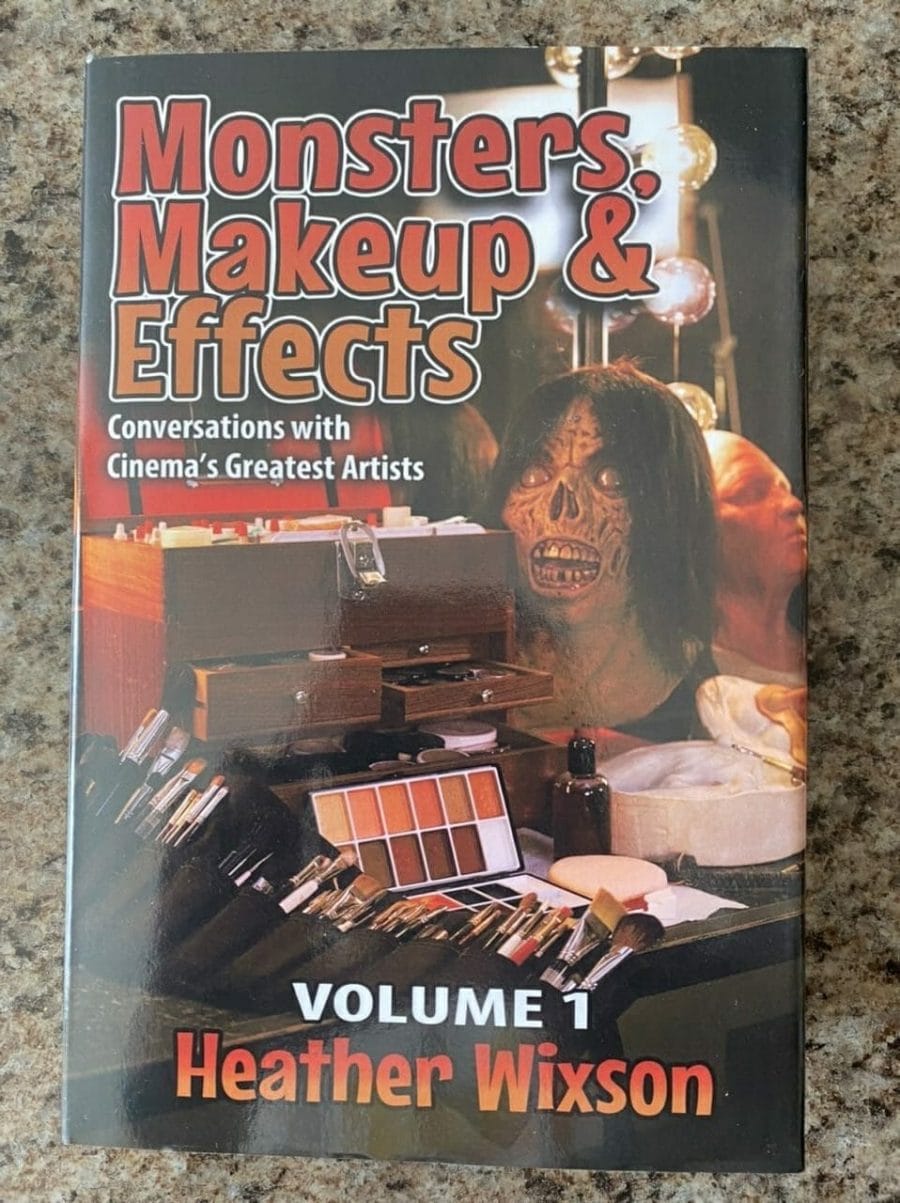
Pennywise. Xenomorphs. Freddy Krueger. Beetlejuice. Jason Voorhees. Most movie fans immediately recognize these creatures and characters, but hardly know much about the artists behind these iconic designs. In Monsters, Makeup & Effects: Volume 1, journalist Heather Wixson shines the spotlight on twenty special makeup effects artists, creators and technicians whose work has left us captivated and marveling at their innovation, ingenuity and creativity.
Featuring behind-the-scenes photos and extensive interviews, MM&E explores the lives, careers and inspirations behind some the greatest artisans to have ever worked in film and television. MM&E is a celebration of the creative spirit and artistic endeavors of those who have worked tirelessly for decades to create the memorable monsters, creatures and onscreen personas that have terrified us, made us laugh and filled us with a sense of wonder.
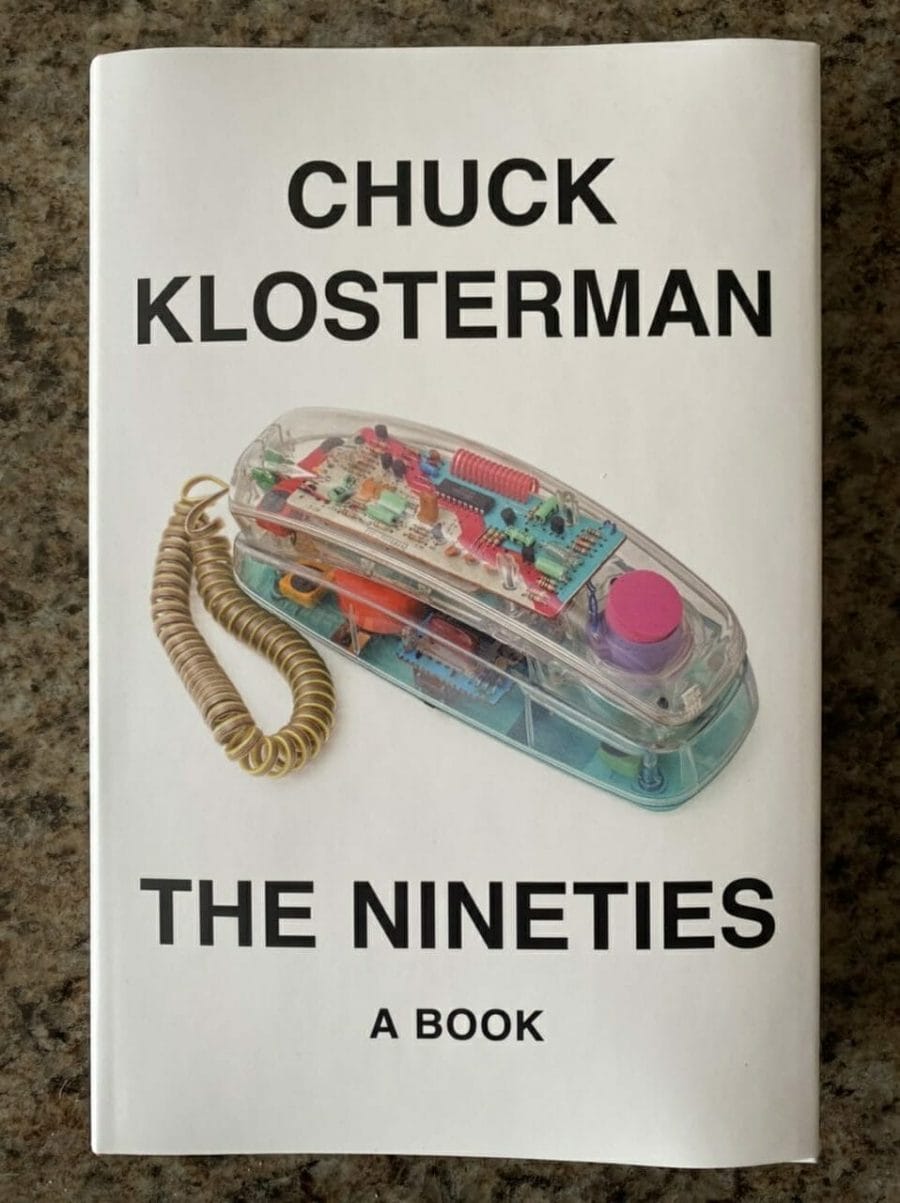
The Nineties: a wise and funny reckoning with the decade that gave us slacker/grunge irony about the sin of trying too hard, during the greatest shift in human consciousness of any decade in American history.
It was long ago, but not as long as it seems: The Berlin Wall fell and the Twin Towers collapsed. In between, one presidential election was allegedly decided by Ross Perot while another was plausibly decided by Ralph Nader. In the beginning, almost every name and address was listed in a phone book, and everyone answered their landlines because you didn’t know who it was. By the end, exposing someone’s address was an act of emotional violence, and nobody picked up their new cell phone if they didn’t know who it was. The ’90s brought about a revolution in the human condition we’re still groping to understand. Happily, Chuck Klosterman is more than up to the job.
Beyond epiphenomena like Cop Killer and Titanic and Zima, there were wholesale shifts in how society was perceived: the rise of the internet, pre-9/11 politics, and the paradoxical belief that nothing was more humiliating than trying too hard. Pop culture accelerated without the aid of a machine that remembered everything, generating an odd comfort in never being certain about anything. On a ’90s Thursday night, more people watched any random episode of Seinfeld than the finale of Game of Thrones. But nobody thought that was important; if you missed it, you simply missed it. It was the last era that held to the idea of a true, hegemonic mainstream before it all began to fracture, whether you found a home in it or defined yourself against it.
In The Nineties, Chuck Klosterman makes a home in all of it: the film, the music, the sports, the TV, the politics, the changes regarding race and class and sexuality, the yin/yang of Oprah and Alan Greenspan. In perhaps no other book ever written would a sentence like, “The video for ‘Smells Like Teen Spirit’ was not more consequential than the reunification of Germany” make complete sense. Chuck Klosterman has written a multi-dimensional masterpiece, a work of synthesis so smart and delightful that future historians might well refer to this entire period as Klostermanian.

Writing a book is a career milestone that only the most elite professionals and thought leaders can achieve—right? Wrong! With the right combination of preparation, commitment, and ambition, anyone can (and should) share their professional expertise in a book. Adding your voice to the conversation leads to a stronger, more inclusive tech industry.
Whether you want to work with a publisher or on your own, Katel LeDû and Lisa Maria Marquis walk you through crafting a stellar proposal, break down the reality of writing and editing a manuscript, and demystify the marketing and publishing process—so when you’re ready to contribute, you’ll know what to expect.
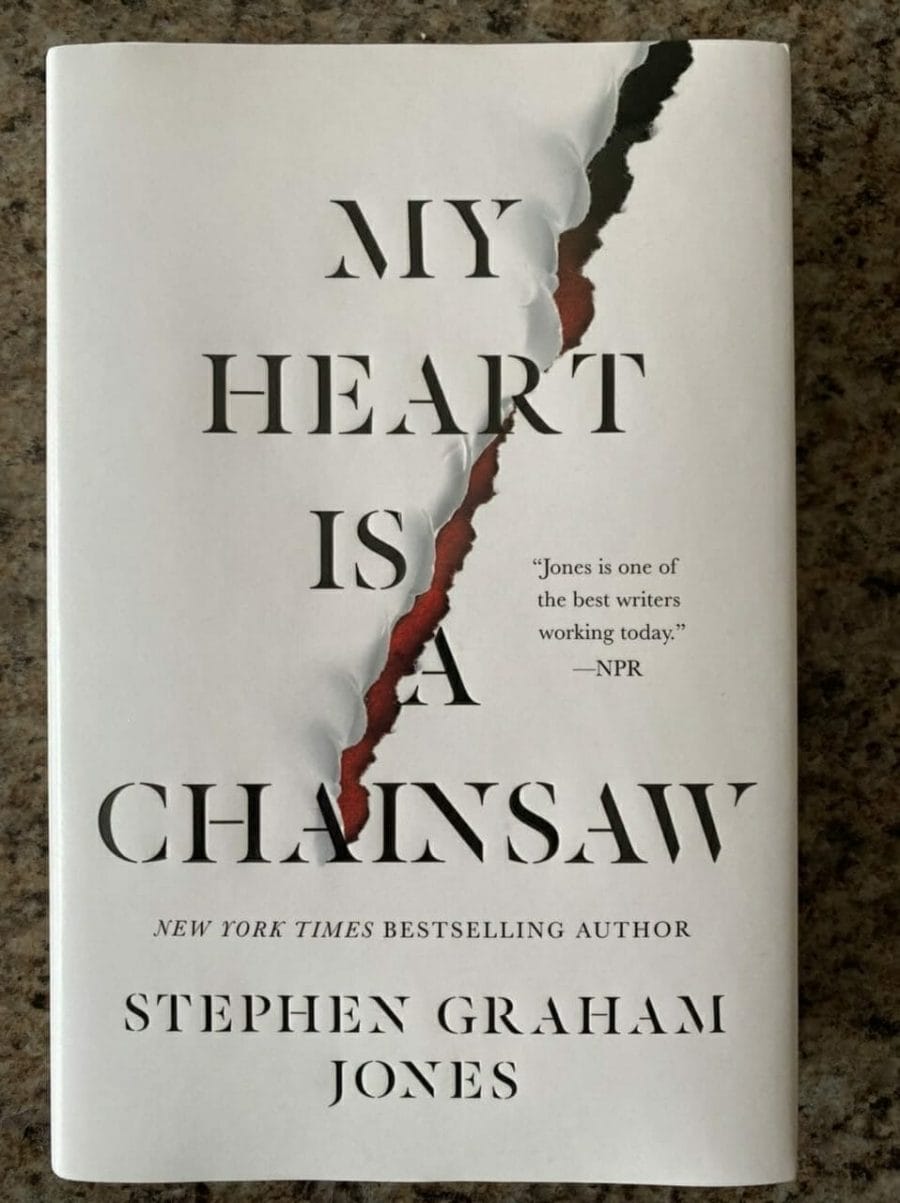
In her quickly gentrifying rural lake town Jade sees recent events only her encyclopedic knowledge of horror films could have prepared her for
Jade Daniels is an angry, half-Indian outcast with an abusive father, an absent mother, and an entire town that wants nothing to do with her. She lives in her own world, a world in which protection comes from an unusual source: horror movies…especially the ones where a masked killer seeks revenge on a world that wronged them. And Jade narrates the quirky history of Proofrock as if it is one of those movies. But when blood actually starts to spill into the waters of Indian Lake, she pulls us into her dizzying, encyclopedic mind of blood and masked murderers, and predicts exactly how the plot will unfold.
Yet, even as Jade drags us into her dark fever dream, a surprising and intimate portrait emerges… a portrait of the scared and traumatized little girl beneath the Jason Voorhees mask: angry, yes, but also a girl who easily cries, fiercely loves, and desperately wants a home. A girl whose feelings are too big for her body.
My Heart Is a Chainsaw is her story, her homage to horror and revenge and triumph.
My autobiography is about the wrestling business and my 15 years in it. I will discuss the Horseman days, WWF and my career before Ole & I became a tag team. The book will have other interesting pieces from my time on the road, and my relationships with other wrestlers and promoters. The book will also be forewarded by Ric Flair. I encourage you to read it if you want to know the “real” story about the “Enforcer” and look behind the curtain at a day in the life of a professional wrestler…
A sensual, terrifying, incredibly accomplished first novel, this fascinating prequel to the classic and most popular horror novel of all time, Dracula, focuses on Dracula’s great-nephew, who inherits the job of managing his great-uncle’s estate…and his appetite. Written in diary form as Dracula is, this compulsively readable book has revelations that will shock and delight readers of the original. More erotic than Anne Rice, Kalogridis is a major new voice in vampire fiction. The first chilling tale in an exciting new trilogy is a rich and terrifying historical novel set fifty years before the opening of Bram Stoker’s Dracula. At the castle of Prince Vlad Tsepesh, also known as Dracula, Vald’s great-nephew Arkady is honored to care for his beloved though strange great-uncle…until he beings to realize what is expected of him in his new role. It seems that either he provides his great-uncle with unsuspecting victims to satisfy his needs, or Vlad will kill those Arkady loves. He is trapped into becoming party to murder and sadistic torture. And it is in his blood. When Arkady learns that his newborn son is being groomed one day to follow in his footsteps, he knows that he must fight Dracula, even if it means death.
Rent in New Metta is through the cavern ceiling. When Granu barely survives her first gig teaching students who attempt to fillet her for lunch, the baby-eating troll ends up unemployed and facing eviction. Granu’s only prospect for income is grueling work in the tar pits. That is, until her playboy best friend devises a perfect, if suicidal, scheme—a heist!
The Covered Bridge, the largest source of income for the city, has New Metta well under hoof. In a week, TCB Corporation pulls in enough cash to buy a small country. It’s the ideal target, but security is top-notch. Granu needs three things to survive this heist: a crew of specialists, impenetrable sun protection, and gallons of grog.
There’s just one thing Granu doesn’t plan for—those damn meddling billy goats.
“This book traces the history of the right to anonymous speech in America, dating back to the pseudonymous publication of the Federalist Papers and other foundational political writings. It examines how courts have recognized a First Amendment right to anonymity, and how that right has shaped the Internet that we know today”
Ebbry-blastin’-theng ye needs must know-oo to lay tongue liker aargh-thentic pirate, by the devil’s twisted tail.
Take a tour through the world of piracy with the only authoritative work on the pirate language. A comprehensive course in pirate vocabulary, pronunciation, grammar, and syntax, The Pirate Primer contains three centuries of distinctive terms and usages uttered by (and attributed to) pirates in film, TV, literature, and history.
Discover more than 100 pages of threats, curses, oaths, insults, and epithets; 31 types of pirate drink; 60 different pirate terms for ”woman”; 67 kinds of pirate torture and punishment; 44 distinct definitions of ”aargh”; and more.
Each entry in the Primer is accompanied by an excerpt, so you can see the words and phrases used in proper context by actual pirates. And each linguistic concept is introduced by a related anecdote or narrative account, so you can live the language while you learn it.
Whether you’re simply fascinated by the culture of the Brethren of the Coast or you fancy yourself a modern-day corsair, The Pirate Primer is your guide to authentic pirate speak. Should you ever stare down Davy Jones and he demands proof that you’re one who flies no flag, despair not.
You’ll be able to talk the talk, and no mistake.
A stolen child.
An ancient evil.
A father’s descent.
And the literary masterpiece that holds the key to his daughter’s salvation.
Professor David Ullman is among the world’s leading authorities on demonic literature, with special expertise in Milton’s Paradise Lost. Not that David is a believer—he sees what he teaches as a branch of the imagination and nothing more. So when the mysterious Thin Woman arrives at his office and invites him to travel to Venice and witness a “phenomenon,” he turns her down. She leaves plane tickets and an address on his desk, advising David that her employer is not often disappointed.
That evening, David’s wife announces she is leaving him. With his life suddenly in shambles, he impulsively whisks his beloved twelve-year-old daughter, Tess, off to Venice after all. The girl has recently been stricken by the same melancholy moods David knows so well, and he hopes to cheer her up and distract them both from the troubles at home.
But what happens in Venice will change everything.
First, in a tiny attic room at the address provided by the Thin Woman, David sees a man restrained in a chair, muttering, clearly insane . . . but could he truly be possessed? Then the man speaks clearly, in the voice of David’s dead father, repeating the last words he ever spoke to his son. Words that have left scars—and a mystery—behind.
When David rushes back to the hotel, he discovers Tess perched on the roof’s edge, high above the waters of the Grand Canal. Before she falls, she manages to utter a final plea: Find me.
What follows is an unimaginable journey for David Ullman from skeptic to true believer. In a terrifying quest guided by symbols and riddles from the pages of Paradise Lost, David must track the demon that has captured his daughter and discover its name. If he fails, he will lose Tess forever.
Is social media destroying democracy? Are Russian propaganda or “Fake news” entrepreneurs on Facebook undermining our sense of a shared reality? A conventional wisdom has emerged since the election of Donald Trump in 2016 that new technologies and their manipulation by foreign actors played a decisive role in his victory and are responsible for the sense of a “post-truth” moment in which disinformation and propaganda thrives.
Network Propaganda challenges that received wisdom through the most comprehensive study yet published on media coverage of American presidential politics from the start of the election cycle in April 2015 to the one year anniversary of the Trump presidency. Analysing millions of news stories together with Twitter and Facebook shares, broadcast television and YouTube, the book provides a comprehensive overview of the architecture of contemporary American political communications. Through data analysis and detailed qualitative case studies of coverage of immigration, Clinton scandals, and the Trump Russia investigation, the book finds that the right-wing media ecosystem operates fundamentally differently than the rest of the media environment.
The authors argue that longstanding institutional, political, and cultural patterns in American politics interacted with technological change since the 1970s to create a propaganda feedback loop in American conservative media. This dynamic has marginalized centre-right media and politicians, radicalized the right wing ecosystem, and rendered it susceptible to propaganda efforts, foreign and domestic. For readers outside the United States, the book offers a new perspective and methods for diagnosing the sources of, and potential solutions for, the perceived global crisis of democratic politics.
One of the most important books of the twentieth century, Karl Popper’s The Open Society and Its Enemies is an uncompromising defense of liberal democracy and a powerful attack on the intellectual origins of totalitarianism. Popper was born in 1902 to a Viennese family of Jewish origin. He taught in Austria until 1937, when he emigrated to New Zealand in anticipation of the Nazi annexation of Austria the following year, and he settled in England in 1949. Before the annexation, Popper had written mainly about the philosophy of science, but from 1938 until the end of the Second World War he focused his energies on political philosophy, seeking to diagnose the intellectual origins of German and Soviet totalitarianism. The Open Society and Its Enemies was the result.
An immediate sensation when it was first published in two volumes in 1945, Popper’s monumental achievement has attained legendary status on both the Left and Right and is credited with inspiring anticommunist dissidents during the Cold War. Arguing that the spirit of free, critical inquiry that governs scientific investigation should also apply to politics, Popper traces the roots of an opposite, authoritarian tendency to a tradition represented by Plato, Marx, and Hegel.
Whodunit?
On a bleak, rainy night, a strange dinner party is held at a gloomy mansion. The guests don’t know each other. They don’t even know their host. Why have they been called together? Who is the mysterious Mr. Boddy? No one has the answers, but before the evening is over, six people have been killed. Who is the murderer? Is it Miss Scarlet? Professor Plum? Mrs. White? Mr. Green? Mrs. Peacock? Colonel Mustard? Or did the butler do it?
This mystery isn’t like any other, because it has four solutions, so read carefully, follow the clues to CLUE, and choose the ending you like best.
“If the end of the twentieth century can be characterized by futurism, the twenty-first can be defined by presentism.”
This is the moment we’ve been waiting for, explains award-winning media theorist Douglas Rushkoff, but we don’t seem to have any time in which to live it. Instead we remain poised and frozen, overwhelmed by an always-on, live-streamed reality that our human bodies and minds can never truly inhabit. And our failure to do so has had wide-ranging effects on every aspect of our lives.
People spent the twentieth century obsessed with the future. We created technologies that would help connect us faster, gather news, map the planet, compile knowledge, and connect with anyone, at anytime. We strove for an instantaneous network where time and space could be compressed.
Well, the future’s arrived. We live in a continuous now enabled by Twitter, email, and a so-called real-time technological shift. Yet this now is an elusive goal that we can never quite reach. And the dissonance between our digital selves and our analog bodies has thrown us into a new state of anxiety: present shock.
Rushkoff weaves together seemingly disparate events and trends into a rich, nuanced portrait of how life in the eternal present has affected our biology, behavior, politics, and culture. He explains how the rise of zombie apocalypse fiction signals our intense desire for an ending; how the Tea Party and Occupy Wall Street form two sides of the same post-narrative coin; how corporate investing in the future has been replaced by futile efforts to game the stock market in real time; why social networks make people anxious and email can feel like an assault. He examines how the tragedy of 9/11 disconnected an entire generation from a sense of history, and delves into why conspiracy theories actually comfort us.
As both individuals and communities, we have a choice. We can struggle through the onslaught of information and play an eternal game of catch-up. Or we can choose to live in the present: favor eye contact over texting; quality over speed; and human quirks over digital perfection. Rushkoff offers hope for anyone seeking to transcend the false now.
Absorbing and thought-provoking, Present Shock is a wide-ranging, deeply thought meditation on what it means to be human in real-time.
First published in 2002. Routledge is an imprint of Taylor & Francis, an informa company.
Darren Burrows reflects on his life and time on the show Northern Exposure.
In the last two decades, both the conception and the practice of participatory culture have been transformed by the new affordances enabled by digital, networked, and mobile technologies. This exciting new book explores that transformation by bringing together three leading figures in conversation. Jenkins, Ito and boyd examine the ways in which our personal and professional lives are shaped by experiences interacting with and around emerging media.
Stressing the social and cultural contexts of participation, the authors describe the process of diversification and mainstreaming that has transformed participatory culture. They advocate a move beyond individualized personal expression and argue for an ethos of “doing it together” in addition to “doing it yourself.”
Participatory Culture in a Networked Era will interest students and scholars of digital media and their impact on society and will engage readers in a broader dialogue and conversation about their own participatory practices in this digital age.
What is the relationship between emerging technology and the future structure of our economy? Is contemporary capitalism unwittingly breeding the technologies that will herald its own downfall? In this cutting-edge new book, rising star of the accelerationist movement Nick Srnicek addresses these questions, showing how contemporary innovations in automation, cybernetics and manufacturing represent a theoretical and practical challenge to the very economic system that bred them.
Historically, thinkers on the left demanded reduced work hours, economic democracy, and freely available abundance. Paradoxically, just as such demands seem as elusive as ever at a political level, they are becoming encoded into the very technological foundations of neoliberalism. Srnicek examines technologies such as automated logistics, cybernetic planning, and additive manufacturing in order to re-interpret older debates about worker control over the means of production, the ‘fetters’ of capitalist development, and situationist concepts of détournement. In so doing, the foundations and future of neoliberalism are brought under intense scrutiny.